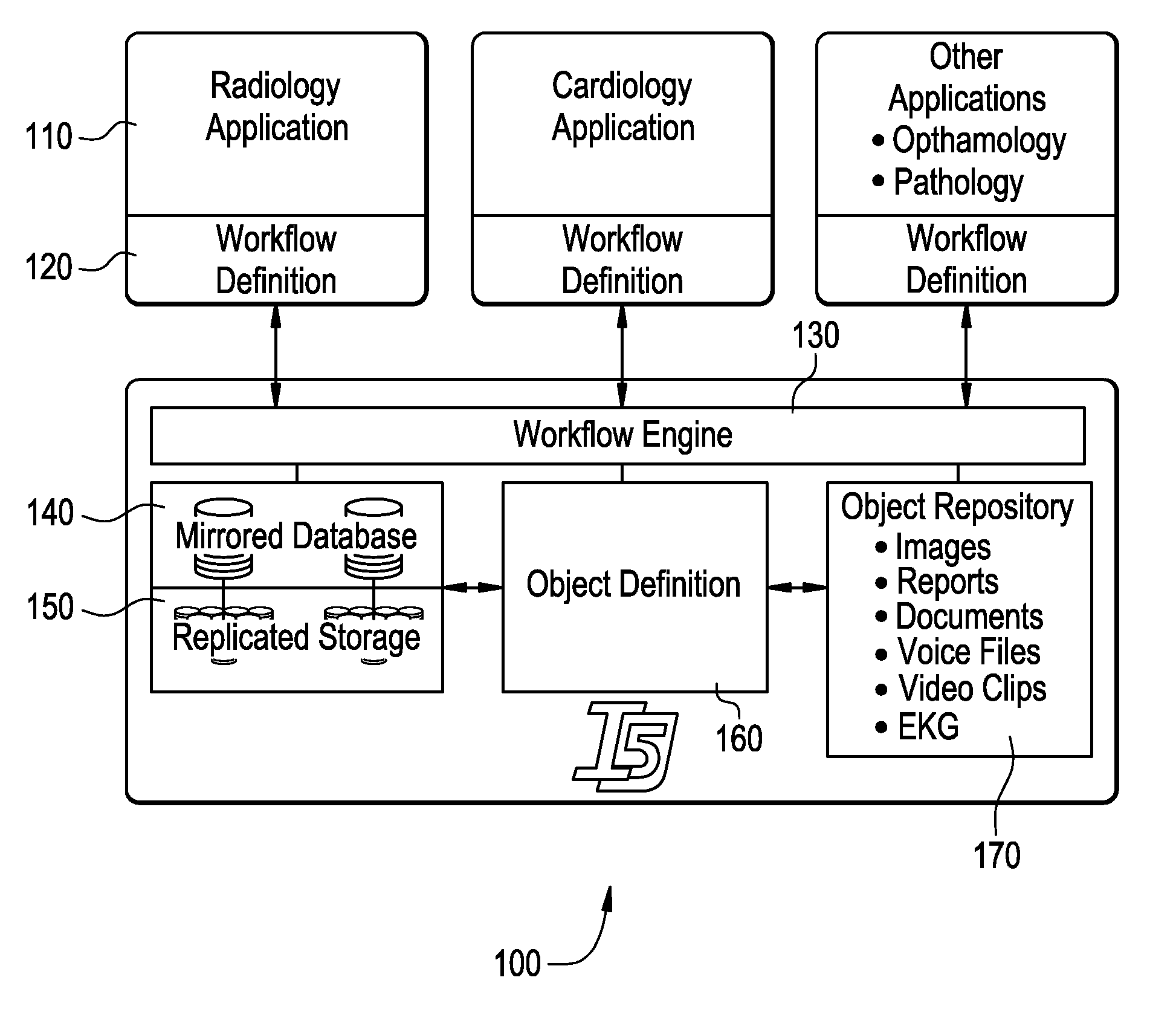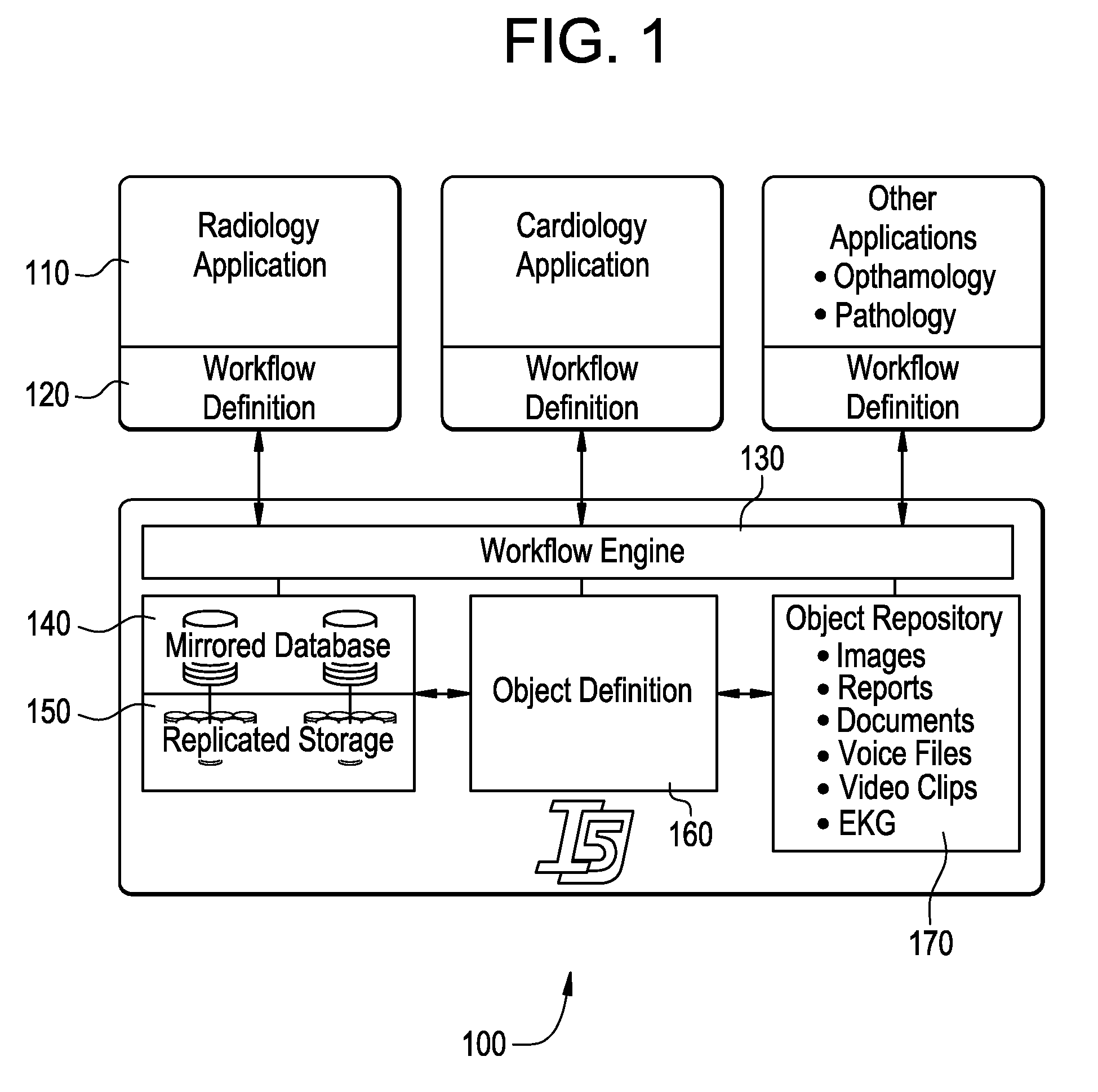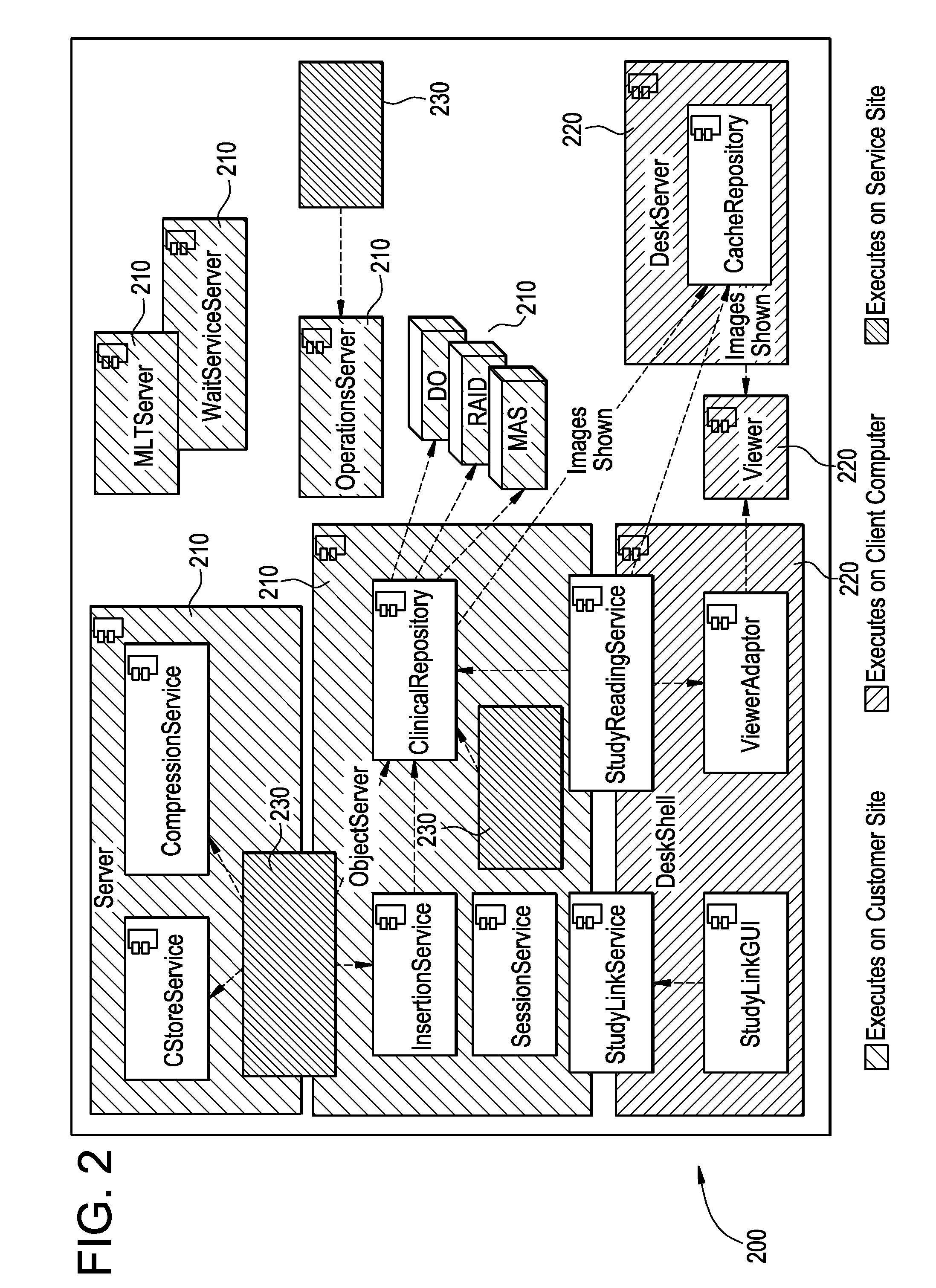Systems and methods for adaptive workflow and resource prioritization
a technology of applied in the field of systems and methods for adaptive workflow and resource prioritization, can solve the problems of introducing delay between clicks, additional delay for loading the next study, and current mechanisms for loading a study that do not allow negotiation
- Summary
- Abstract
- Description
- Claims
- Application Information
AI Technical Summary
Problems solved by technology
Method used
Image
Examples
Embodiment Construction
[0021]Certain embodiments relate to system resource and process awareness. Certain embodiments help provide awareness to a user from both a user interface and a client perspective regarding status of a patient and the patient's exam as well as a status of system resources. Thus, the user can review available system resources and can make adjustments regarding pending processes in a workflow. For example, a user may not have printer access to generate a report at a first workstation and may need to log in to another system to generate the report including discharge instructions for a patient and / or feedback for a referring physician. As another example, a certain component or node in an image processing pipeline may be slower than other components or nodes and / or may be experiencing a bottleneck that impacts workflow execution. A user can see, based on system resource and utilization information, when an image is loading slowly and can move on to another task, for example. In certain...
PUM
 Login to view more
Login to view more Abstract
Description
Claims
Application Information
 Login to view more
Login to view more - R&D Engineer
- R&D Manager
- IP Professional
- Industry Leading Data Capabilities
- Powerful AI technology
- Patent DNA Extraction
Browse by: Latest US Patents, China's latest patents, Technical Efficacy Thesaurus, Application Domain, Technology Topic.
© 2024 PatSnap. All rights reserved.Legal|Privacy policy|Modern Slavery Act Transparency Statement|Sitemap



